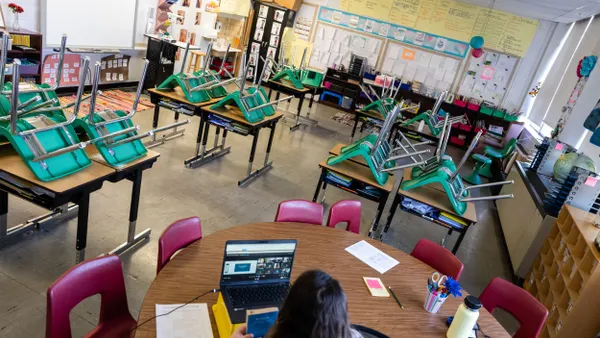As districts look for ways to close teacher shortages before the new school year, the governing board for Tucson Unified School District in Arizona recently approved a plan to use $385,000 in Elementary and Secondary School Emergency Relief funding to contract five certified general education teachers to fill high-needs roles for the 2022-23 school year.
Before a school can receive a contracted teacher from Maxim Healthcare Services, a healthcare and education staffing agency, administrators will have to identify the hard-to-fill positions, offer teachers in the school the opportunity to fill the vacancy, request a long-term substitute teacher, and maximize the number of students in a classroom, said Flori Huitt, the TUSD’s assistant superintendent for curriculum and instruction, during a Tucson Unified School District Governing Board meeting on August 9.
“The contracted teachers would be a very last resort,” Huitt said.
The highest need general education areas are in secondary schools teaching math, Huitt told the board. The contracted teachers would be paid a rate of $58 per hour and would teach for six class periods per day. Comparatively, substitute teachers in the district are paid between $140 to $160 per day, depending on their experience.
One governing board member suggested increasing the rate for substitute teachers, adding that these contracted positions will bring morale down for substitutes. Another board member pushed back and said a daily substitute teacher is not going to help students achieve in math.
While there’s no one-size-fits-all approach to the teacher shortage, TUSD’s latest solution shows the delicate balance between quality over quantity that schools must consider as they find quick fixes for this pressing issue.
State leaders have also varied their approaches to tackling the teacher shortage. In Arizona, a law signed in July by Gov. Doug Ducey removed a bachelor’s degree requirement for teaching full-time in a classroom.
Meanwhile, the Pennsylvania Department of Education announced a three-year plan to address the teacher shortage by expanding access to high-quality teacher preparation programs, streamlining certification processes, and improving diversity and representation in the teaching field.
Earlier this year, several states also began loosening requirements for substitute teachers as districts faced substitute shortages.







 Dive Awards
Dive Awards





